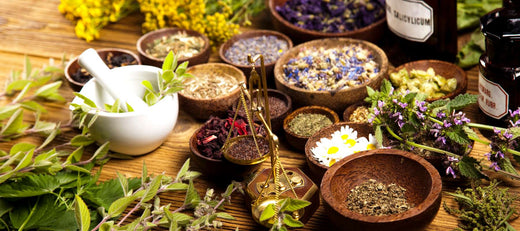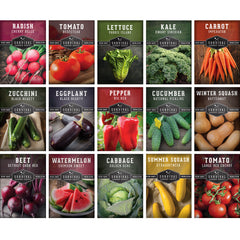As the weather gets colder, some of your perennial plants may need to come indoors. This will depend on each variety's temperature sensitivity and your climate. Some examples of plants that may need to come indoors include thyme, rosemary, lemongrass, succulents, and houseplants.
Ideally, you should move your tender plants indoors before a hard frost, but if you are in a time crunch, you can cover your plants outdoors during frosty nights until you can safely move them inside. You will want to take some time to make the transition to less light as easy as possible and eliminate any insects or pests that may have moved in.
Here are some helpful tips for bringing plants inside for the winter.
Reduce Light to Prep Plants to Move Indoors

To prepare them for indoor life, move the plants you plan to bring inside into a shady spot for a couple of weeks. This helps them acclimate to the lower light they will receive once inside. Even with modern plant lights, it is difficult to replicate the intensity of light available outdoors in the sunshine and your plants will benefit from an adjustment period. This works similarly to hardening off seedlings in the spring, only in reverse.
Remove Pests From Your Outdoor Plants
One of the most common issues people encounter when bringing plants indoors is the pests that come with them. This is probably the most important step before bringing plants inside. You do not want to find your house infested with fruit flies, aphids, or even snakes that were hiding in your plant pot.
There are a few ways you can do this:
- Give plants a good firm spray from the hose. This should help to knock off any insects. You may want to do this a couple of times.
- For more persistent pests, apply insecticidal soap or neem oil making sure pests are gone before moving the plants inside.
- Food-grade diatomaceous earth sprinkled on the top of the soil is another option to help prevent insects from climbing onto the plant.
- Don’t forget the soil! Lots of wild critters can linger in your plant’s soil. There are a couple of methods of dealing with this.
- Repot the plant. Remove the plant from its pot, thoroughly rinse the roots, and replant into a new pot (or sterilize the old one) with fresh sterile soil. This might be an especially good option if your plant added a lot of new growth over the summer and would benefit from a larger pot.
- Soak the whole pot. Place the pot in a bucket, fill the bucket with water up to the top of the soil, and soak for several hours. Any pests in the soil will drown or float away. Make sure to allow the plant to dry out before moving it inside.
Bring Your Outdoor Plants Inside

Now that you have prepared your plants, it is time to bring them indoors. Try to replicate the ideal environment for your plants. Particularly if they are sun-lovers, try to find a south-facing sunny windowsill or provide some plant lights. Keep in mind that some plants can be toxic to pets, so keep them out of reach.
Expect some loss of leaves as the plants adjust to the new light conditions. Monitor regularly for any pests or diseases.
Provide plenty of space around the plants for good air circulation. This will help prevent any rot or fungus. Cut back on water and fertilizer over the winter because plant growth slows in cooler months. When you do water, make sure not to overwater. Leaving the plant sitting in water could cause root rot. Start fertilizing weekly in the spring before returning the plants outside.
For tropical-native plants, indoor air may be too dry. You can increase humidity with a humidifier or set your plants in the shower and give them a warm shower for 5 to 10 minutes a few times over the winter. Using a spray mister on your plants really has no effect on increasing humidity and it can help foster fungus growth, bacterial infections, and mineral deposits on the leaves.
Enjoy Your Plants
Prepare your plants, remove the pests, and bring your favorite plants indoors for the winter. You can enjoy the beauty and benefits of growing green things in your home. Your plants will be bigger, healthier, and more productive when they go back outside in the spring.
























